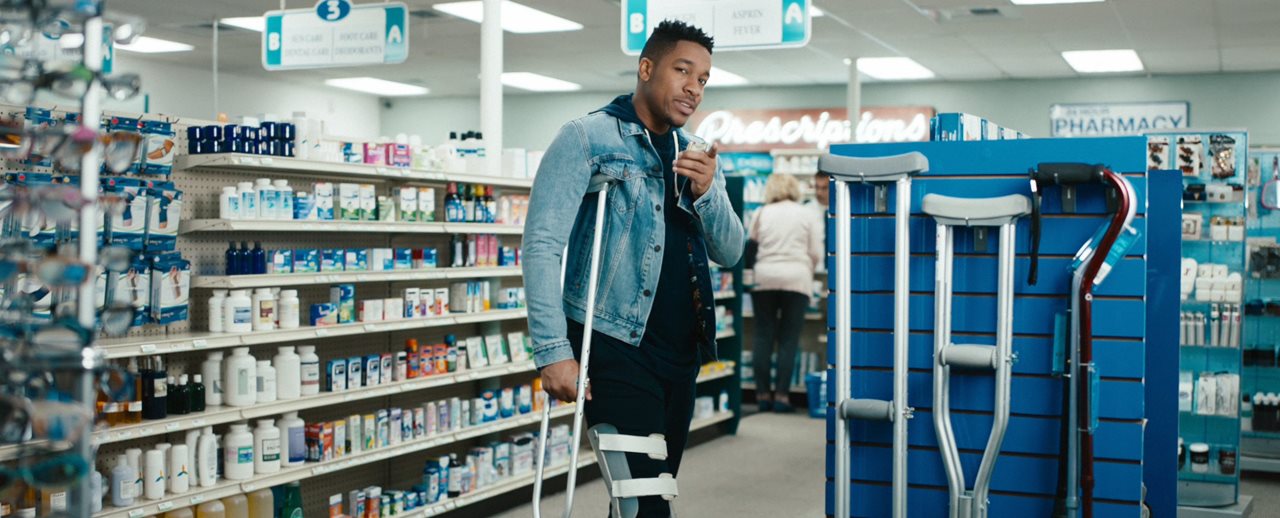2019-02-01T10:31:01
(BPT) – “I didn’t realize that depression was more than just sadness.”
Like most people, Ali, a single mother of two children, had this common misperception about major depressive disorder (MDD), also known as depression. Depression is a complex mental health illness that affects approximately 16 million people annually. Part of what makes depression complex is that people with the condition experience multiple symptoms.
Most people don’t know that depression includes many symptoms beyond sadness, such as loss of interest or pleasure doing things, feeling down or hopeless, changes in appetite and eating habits, tiredness, sleeping too much and difficulty concentrating on things or making decisions. Many MDD patients recognize the mood and physical attributes of depression, but may not recognize other symptoms, such as cognitive symptoms like trouble concentrating, may also be part of their depression.
“With my depression, I was sad and I also noticed that I felt tired often and had trouble concentrating.”
For a long time, Ali didn’t realize these symptoms were associated with her depression.
It wasn’t until Ali approached her healthcare provider about her symptoms that she learned depression was more than just sadness. “I’m glad I spoke up to my doctor and we were able to have an open conversation about what I was experiencing. It was nice to have an understanding of how my symptoms were associated with my depression.” After speaking with her doctor, Ali was prescribed TRINTELLIX® (vortioxetine), a prescription medication used to treat MDD in adults. TRINTELLIX’s U.S. prescribing information includes data from clinical trials showing a positive effect on processing speed, an important aspect of cognitive function.
TRINTELLIX has been shown to help with the overall symptoms of depression based on a total score on a standardized depression rating scale in clinical trials. Individual results may vary. It’s the first FDA-approved treatment for MDD where the U.S. prescribing information has data showing a positive effect on the DSST (also known as the Digit Symbol Substitution Test), a neuropsychological test which most specifically measures processing speed, an aspect of cognitive function that may be impaired in adults with depression. The effects observed on DSST may reflect improvement in depression. Comparative studies have not been conducted to demonstrate a therapeutic advantage over other antidepressants on the DSST.
“It’s important to talk to your healthcare provider about what you’re feeling so you can work together to decide on a treatment plan that’s right for you. Your experience may vary. I proactively spoke up, and I’m now on a treatment plan that has helped make a difference for me.”
If you are experiencing symptoms of depression, it’s important that you speak to your healthcare provider. For more information about MDD and TRINTELLIX, visit www.TRINTELLIX.COM.
IMPORTANT SAFETY INFORMATION
|
Suicidal Thoughts and Actions and Antidepressant Drugs
Antidepressants may increase suicidal thoughts or actions in some children, teens or young adults within the first few months of treatment or when the dose is changed. Depression or other serious mental illnesses are the most important causes of suicidal thoughts or actions. People who have (or have a family history of) bipolar illness, or suicidal thoughts or actions may have a particularly high risk. Pay close attention to any changes, especially sudden changes in mood, behavior, thoughts or feelings. Call your healthcare provider right away if symptoms such as anxiety, irritability, impulsivity, trouble sleeping, aggressive behavior or suicidal thoughts are new, worse or worry you. TRINTELLIX has not been evaluated for use in patients under 18.
|
Do not take TRINTELLIX if you:
- Are allergic to vortioxetine or any of the ingredients in TRINTELLIX
- Take a Monoamine Oxidase Inhibitor (MAOI). Ask your healthcare provider or pharmacist if you are not sure if you take an MAOI, including the antibiotic linezolid; do not take an MAOI within 21 days of stopping TRINTELLIX; do not start TRINTELLIX if you stopped taking an MAOI in the last 14 days
TRINTELLIX may cause serious side effects including:
Serotonin Syndrome: A potentially life-threatening problem that can happen when medicines such as TRINTELLIX are taken with certain other medicines. Symptoms may include agitation, hallucinations, coma or other changes in mental status; problems controlling movements or muscle twitching, stiffness or tightness; fast heartbeat, high or low blood pressure; sweating or fever; nausea, vomiting or diarrhea.
Abnormal bleeding or bruising: TRINTELLIX and other serotonergic antidepressant medicines may increase your risk of bleeding or bruising, especially if you take the blood thinner warfarin (Coumadin®, Jantoven®), a non-steroidal anti-inflammatory drug (NSAID), or aspirin.
Manic episode: Symptoms may include greatly increased energy; severe trouble sleeping; racing thoughts; reckless behavior; unusually grand ideas; excessive happiness or irritability; talking more or faster than usual.
Visual problems: May include eye pain, changes in vision, swelling or redness in or around the eye. Only some people are at risk for these problems. You may want to undergo an eye examination to see if you are at risk and receive preventative treatment if you are.
Low salt (sodium) levels in the blood: Symptoms may include headache; difficulty concentrating, memory changes or confusion; weakness and unsteadiness on your feet; and in severe or sudden cases hallucinations, fainting, seizures or coma. If not treated, severe low sodium levels can cause death.
Before starting TRINTELLIX, tell your healthcare provider if you have or had liver problems, seizures or convulsions, bipolar disorder (manic depression) or mania, low salt (sodium) levels in your blood, bleeding problems, drink alcohol, have any other medical conditions or if you are pregnant, nursing, plan to become pregnant, or plan to nurse.
TRINTELLIX and some medicines may interact with each other, may not work as well, or may cause serious side effects when taken together. Tell your healthcare provider if you plan on or are taking any other prescription and non-prescription medicines, vitamins and herbal supplements including medicines for migraine headaches, such as triptans; medicines used to treat mood, anxiety, psychotic or thought disorders such as tricyclics, lithium, SSRIs, SNRIs, bupropion, buspirone or antipsychotics; MAOIs including linezolid (a specific antibiotic); over-the-counter supplements such as tryptophan or St. John’s wort; and the following medicines: aspirin, NSAIDs, warfarin (Coumadin®, Jantoven®), diuretics, rifampin, carbamazepine, phenytoin, quinidine, tramadol or fentanyl.
Common side effects of TRINTELLIX include: nausea, constipation or vomiting. These are not all the possible side effects of TRINTELLIX.
Do not start or stop taking TRINTELLIX without talking to your healthcare provider first. Suddenly stopping TRINTELLIX when you take higher doses may cause you to have side effects including headache, stiff muscles, mood swings, sudden outbursts of anger, dizziness or feeling lightheaded, or runny nose.
Talk to your healthcare provider.
You are encouraged to report negative side effects of prescription drugs to the FDA. Visit www.fda.gov/medwatch or call 1-800-FDA-1088.
Indication for TRINTELLIX
TRINTELLIX is a prescription medicine used to treat Major Depressive Disorder (MDD) in adults.
TRINTELLIX is available as 5 mg, 10 mg and 20 mg tablets.
Please see Prescribing Information, including Medication Guide for TRINTELLIX.
USD/VOR/18/0069














